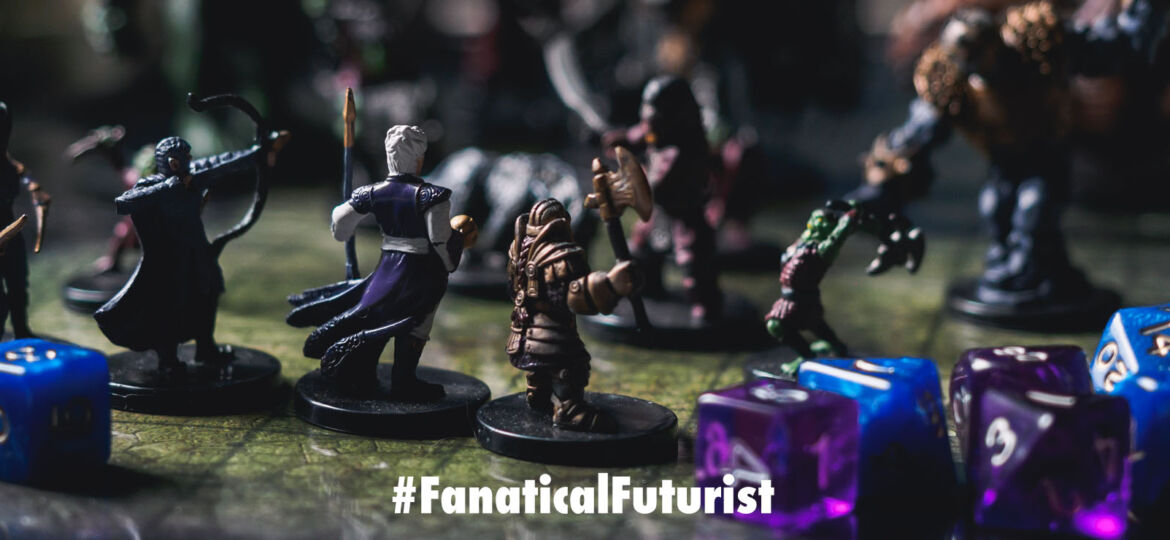
WHY THIS MATTERS IN BRIEF
Today we’re increasingly used to AI’s producing content, such as DeepFakes, but tomorrow they’ll be able to create stories and content that adapts in real time to the users requests and behaviours.
 Interested in the Exponential Future? Connect, download a free E-Book, watch a keynote, or browse my blog.
Interested in the Exponential Future? Connect, download a free E-Book, watch a keynote, or browse my blog.
Lots of game players around the world are getting hopelessly lost in a bizarre new text adventure game, but for once it’s not entirely their fault. That’s because the game, appropriately named GPT Adventure, after the Artificial Intelligence (AI) that created it – GPT-2 that was created by OpenAI and dubbed “the world’s most dangerous fake news text generator,” that you can try for yourself – generates the game play as users play. The GPT Adventure game was trained on transcripts of existing text adventure games so the game’s like a strange, dreamlike version of 1970s text adventures like “Zork” or “Adventureland.”
The game was created by Northwestern University neuroscience graduate student Nathan Whitmore, and in his blog, Whitmore writes that he was inspired by the Mind Game, a fictional game generated in real time by AI in the sci-fi novel “Ender’s Game.”
GPT Adventure, which you can play here, isn’t that sophisticated, but the experiment is a fascinating glimpse into the future of procedurally generated video games. And as AI’s get better at generating game content on the fly in real time, for example Promethean AI’s system that creates game environments in seconds, and Nvidia’s synthetic imagery platform that was recently used to create the first machine generated video game demo, it isn’t a stretch to say that by 2025 we’ll undoubtedly start seeing the first AI generated multi-user graphical video games that, like GPT Adventure are able to create their own procedurally generated graphical video games without the need for human game designers.
To play GPT Adventure you’ll first need to click the “Open in playground” link towards the top left of the screen, then hit the “play” arrow icon that appears in the brackets at the start of the setup section. Once it’s ready, you can click play and start entering commands.
Like most AI systems the game tends to forget what it’s already told the player – something that Google’s DeepMind division is working on fixing by giving AI’s long term human-like memory – so it occasionally transports players willy-nilly through various chambers and corridors whether they like it or not.
While the experience might be jarring for someone making a serious attempt to “complete” the game — which according to Whitmore has no end — many users are reporting that the game’s “a delightful adventure into the metaphorical mind of the AI.” As you do.
At one point when I was playing it the game told me that there was a hole in the floor, and when I issued the command “Jump down hole,” it responded with an unusual plea – “PLEASE, LET ME JUMP DOWN THE HOLE FIRST.”
I told it that it could go first, and it transported me into a chamber with a flagon full of water that I failed, despite multiple attempts, to drink. I also couldn’t escape the amorphous diamond mine that it trapped me in, so I gave up and said “TELEPORT to Jupiter.” And it worked.
All said GPT Adventure is a fascinating trip into the future, and brings the future to life. And even though it’s still learning and it’s text based, as mentioned previously it’s only time until we see the emergence of fully immersive graphical games that use the same principles to create games and worlds without end – we are seeing the start of a new gaming revolution, and it’s going to be an amazing ride so take a seat and strap in.

















[…] accurate sounding fake news and basic code all the way through to helping people create new types of never ending “procedural” games, and writing winning term papers for students that helped them pass class with flying […]